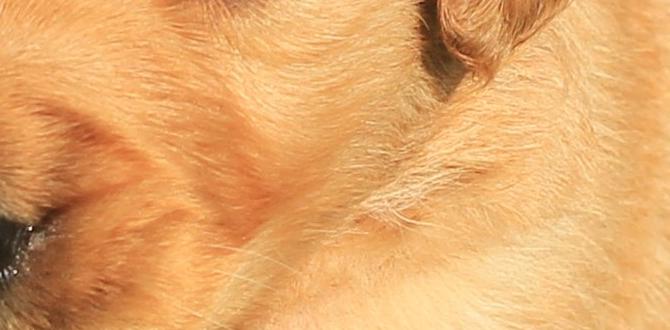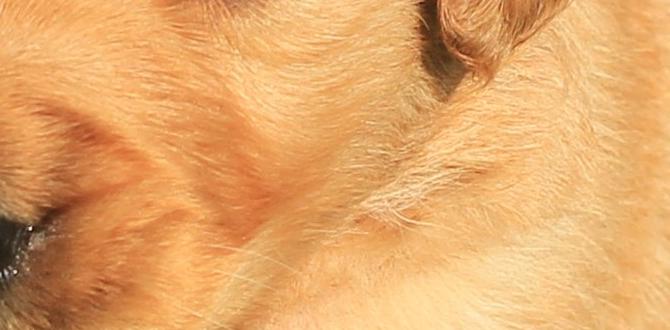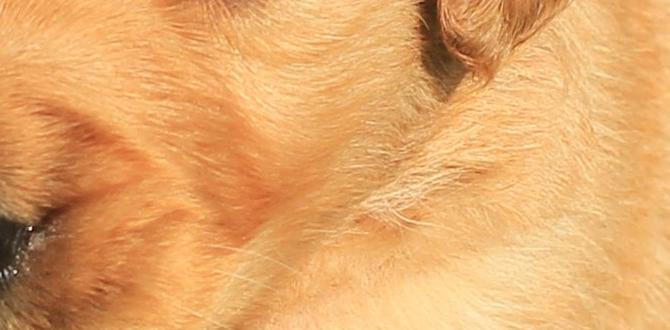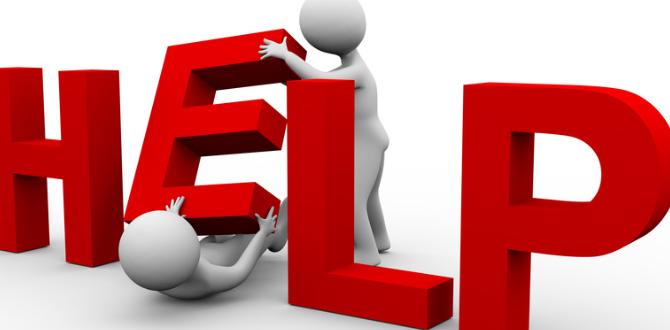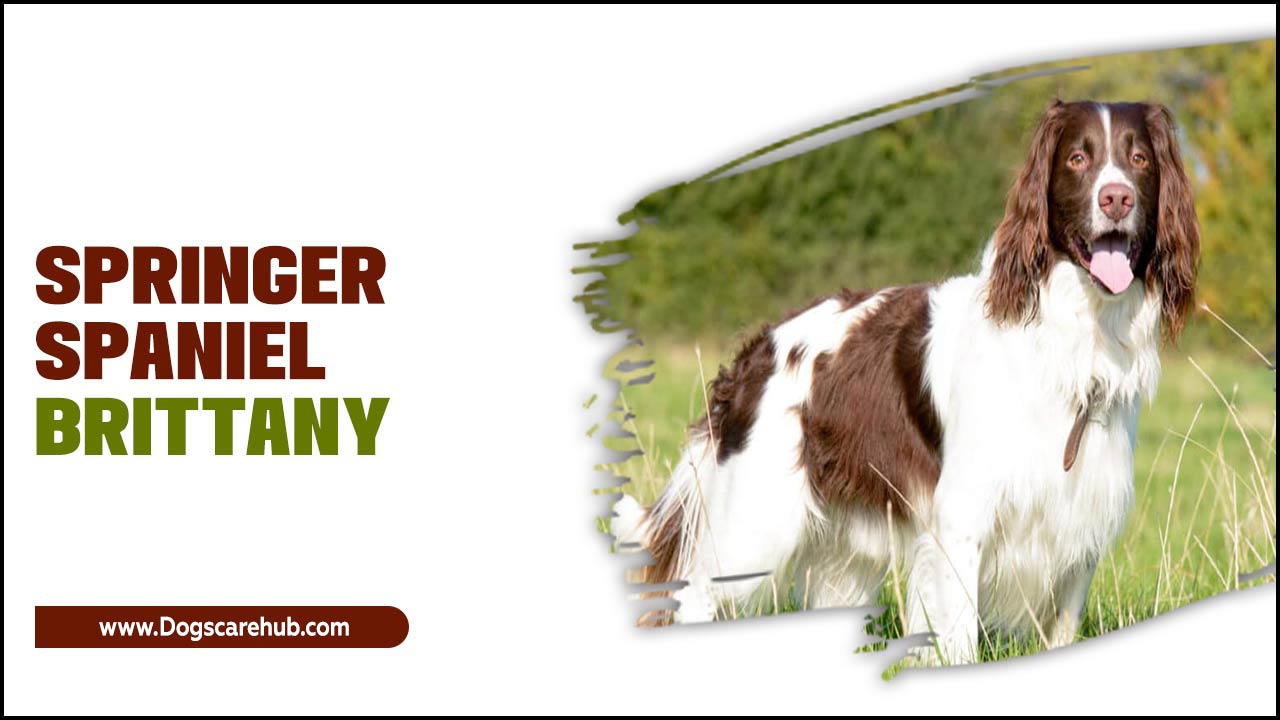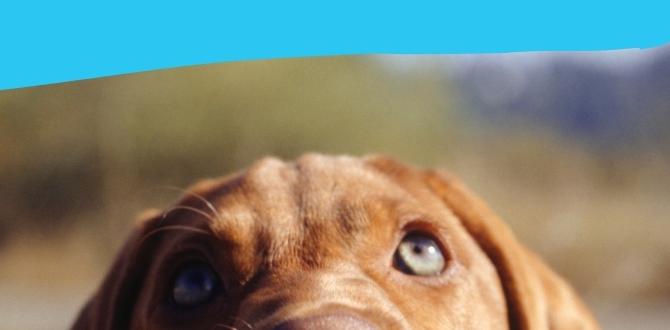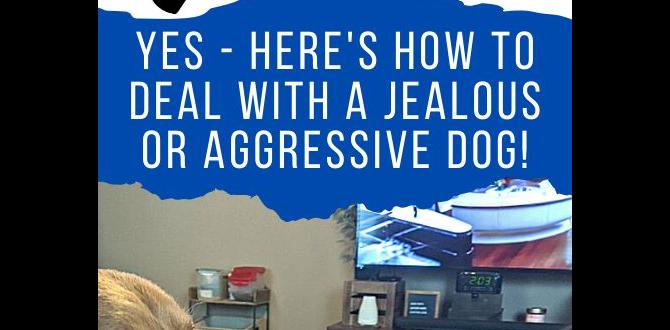Have you ever seen a dog bark and jump at every sound? It can be surprising and a bit scary. Many dog owners wonder how to make their dog less reactive. Imagine walking your dog calmly while others pass by without any fuss. That could be a reality with the right approach.
Let’s face it, reactivity can lead to stressful dog walks. But don’t worry! There are simple ways to help your furry friend stay cool and relaxed. By teaching them new skills, you can turn those wild moments into peaceful experiences.
Did you know that some dogs react more because they are scared? Understanding your dog’s feelings can help find the best method to ease their anxiety. If you’re eager to create a more enjoyable time with your dog, keep reading for some helpful tips and tricks!
How To Make Dog Less Reactive: Tips And Techniques
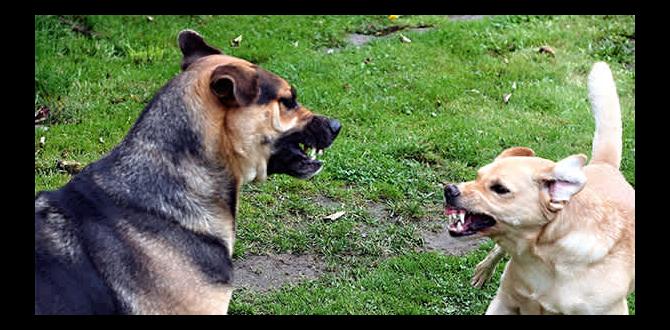
How to Make Dog Less Reactive
Making your dog less reactive can be a rewarding journey. First, understand their triggers, like loud noises or other dogs. Gradually expose them to these triggers in a controlled way. Positive reinforcement works wonders; reward calm behavior with treats. Socialization is key, too—slowly introduce your dog to new environments and people. Have you noticed how dogs react differently when they feel secure? Building their confidence can make a big difference. Remember, patience is crucial in this process!Understanding Dog Reactivity
Definition of dog reactivity and its types. Common triggers that lead to reactive behavior.Dog reactivity is when a dog becomes overly excited or upset. This can lead to barking, lunging, or growling. There are a few types of reactivity: fear-based, frustration-based, and aggression-based. Common triggers include:
- Strangers or new people
- Other dogs
- Fast-moving objects like bikes
- Loud noises
What causes dogs to be reactive?
Many dogs react because they feel scared or threatened. Social skills may be lacking, leading to confusion. This can cause them to bark or act aggressively to protect themselves.
Identifying Your Dog’s Triggers
How to observe and note reactivity patterns. Tools for assessing your dog’s reactions in different environments.To help your dog stay calm, first, watch for things that make them jumpy. Is it other dogs, loud noises, or even squirrels? Keeping track of these events can help you spot a pattern. Use a notebook or an app to jot down your pup’s reactions in different places.
| Trigger | Reactivity Level | Notes |
|---|---|---|
| Other dogs | High | Leash snapping and barking! |
| Loud noises | Medium | Tails go between legs! |
| Squirrels | Very High | Instant zoomies! |
Using tools like a leash or a muzzle can help you control the situation better. A little planning goes a long way. Remember, it’s all part of the adventure of being a dog parent! Who knew observing could turn into dog detective work? 🕵️♂️🐶
Building a Strong Foundation: Basic Training
Importance of obedience commands in reducing reactivity. Techniques for establishing consistent communication with your dog.Training your dog to follow basic commands is like building a really strong doghouse. A sturdy foundation helps keep your furry friend calm and happy. Obedience commands such as “sit” and “stay” are essential in teaching your dog to listen and behave. This makes them less jumpy around distractions. To communicate well with your dog, use clear words and signals. Remember, consistency is key! Try sticking to a routine, like a sitcom dog loves each week – familiar but still fun!
| Obedience Command | Purpose |
|---|---|
| Sit | Teaches patience and focus |
| Stay | Helps with impulse control |
| Come | Encourages a strong bond and trust |
So next time your dog starts barking at every passing squirrel, remember that a little training goes a long way!
Desensitization Techniques
Stepbystep guide on gradual exposure to triggers. Creating positive associations through rewards and praise.Using desensitization techniques can help your dog feel calm around triggers. Start by slowly introducing your dog to what makes them anxious, like loud noises or other dogs, from a safe distance. Keep it friendly! Reward them with treats and praise when they stay calm. This helps build a happy connection with the trigger. Here’s a simple table to help with your training:
| Step | Action | Reward |
|---|---|---|
| 1 | Identify trigger | Stay calm, treat ready! |
| 2 | Gradually expose | Give treats for calmness. |
| 3 | Increase exposure | Praise like a cheerleader! |
Repeat these steps until your dog feels good around the trigger. Remember, patience is key, and snacks help too!
Redirection Strategies
Techniques for diverting attention during reactive moments. Interactive toys and activities to keep your dog engaged.Dogs can be easily distracted during reactive moments. Redirection strategies can help. Use interactive toys or activities that shift your dog’s focus away from what upsets them. Here are a few ideas:
- Offer a favorite toy to play with.
- Start a game of fetch or tug.
- Teach a new trick for mental stimulation.
- Provide a puzzle toy filled with treats.
These techniques keep your dog busy and calm. They also build a strong bond between you and your furry friend.
What are some ways to engage a reactive dog?
Giving your dog fun toys and activities helps them feel calmer and happier.
Socialization: The Key to a Well-Adjusted Dog
Safe environments for socializing reactive dogs. How controlled playdates can positively impact behavior.Dogs love to make new friends, but sometimes they need help! Socializing in safe environments can turn your reactive pup into a social butterfly. Think of it as doggy play therapy! Arranging controlled playdates lets dogs meet others in a calm way. This helps them learn to feel relaxed and happy around their furry pals. Merely keeping them on a leash won’t work like magic, but these fun dates can reduce barking and jumping. After all, no one wants a barker in the dog park!
| Benefits of Controlled Playdates | Effects on Behavior |
|---|---|
| Builds Confidence | Reduces Reactivity |
| Improves Social Skills | Makes Playtime Fun |
Professional Help: When to Seek a Trainer
Signs that you may need to consult a professional dog trainer. Different types of training programs available for reactive dogs.Noticing your dog is acting too excited or scared around other animals? It might be time to consult a trainer. Here are some signs:
- Your dog barks or lunges at other dogs.
- Your dog hides or cowers in public places.
- You feel overwhelmed or unsure how to help your dog.
Trainers offer different programs for reactive dogs, such as:
- Basic Obedience Training
- Behavior Modification Classes
- Private Training Sessions
Finding the right help can make a big difference for you and your furry friend!
When should I seek a dog trainer?
Seek a trainer if your dog shows constant fear, aggression, or you feel stuck and frustrated.
Maintaining Consistency at Home
Strategies for ensuring all family members contribute to training. Establishing routines that reinforce positive behavior.Keeping training consistent at home helps dogs learn better. Everyone in the family should work together. Make sure all members use the same commands and rules. This way, your dog will not get confused.
- Set a regular schedule for training sessions.
- Use the same words for commands.
- Reward good behavior from everyone.
- Practice daily routines that build good habits.
Staying consistent helps dogs feel safe. This can make them less reactive. The more everyone works together, the smoother the training will go.
How can family help in dog training?
Family members can support training by following the same rules, using the same commands, and rewarding good behavior consistently.
Monitoring Progress and Adjusting Techniques
Keeping track of improvements and setbacks over time. Adapting training methods based on your dog’s response.Tracking your dog’s behavior helps you see what works. Keep a diary to note changes over time. Celebrate small wins! If your dog reacts well, keep using that method. If not, try something new. Adapting makes your training effective. Remember, patience is key.
How do I know my dog is progressing?
Look for signs like calmer behavior or easier interactions with new people and pets.
Tips to Monitor Progress:
- Write down daily notes.
- Take photos or videos.
- Track your dog’s reactions.
Long-Term Strategies for Success
Incorporating regular exercise and mental stimulation. The importance of patience and perseverance in the training process.Regular exercise is a game-changer for your dog. It helps burn off excess energy and keeps them from bouncing off the walls like a kangaroo! Think long walks, fun games, or even a playdate with other pups. Mental stimulation is just as vital—try food puzzles or training tricks to keep their minds busy.
Remember, training takes time. A wise dog once said, “Patience is a virtue” (okay, maybe that was just my cat). Stick with it, and celebrate small victories. Soon enough, your dog will be calmer and more chill!
| Activity | Benefits |
|---|---|
| Daily Walks | Banishes excess energy! |
| Playdates | Teaches social skills! |
| Mental Games | Sharpens their brain! |
Conclusion
In summary, making your dog less reactive takes time and effort. Start with calm training and reward good behavior. Socializing your dog can help, too. Remember to stay patient and consistent. Use these tips, and you’ll see progress. For more ideas, check books or online resources. Your dog will thank you for it!FAQs
Sure! Here Are Five Related Questions On The Topic Of Making A Dog Less Reactive:Sure! Here are five tips to help your dog be less reactive: 1. **Stay Calm**: When your dog sees something that makes them bark or jump, stay calm. Your dog can feel your emotions. 2. **Teach Commands**: Teach your dog basic commands like “sit” or “stay.” This helps them focus on you instead of the distraction. 3. **Use Treats**: Reward your dog with treats when they stay calm. This helps them learn that calm behavior gets good things. 4. **Practice Socializing**: Take your dog to different places to meet other dogs and people. This helps them get used to new sights and sounds. 5. **Have Patience**: Remember, it takes time for some dogs to change. Be patient and keep practicing!
Sure! Please provide the question you would like me to answer.
What Are Common Triggers That Cause Reactivity In Dogs, And How Can I Identify Them?Common triggers that make dogs react might include loud noises, unknown people, or other animals. If your dog barks, growls, or pulls on the leash, it might be reacting. You can watch your dog’s body language. Signs like a stiff body, raised fur, or a fixated stare can help you spot triggers. Keeping a journal of when your dog reacts can also help you identify patterns.
What Training Techniques Can Be Effective In Reducing My Dog’S Reactivity Towards Other Dogs Or People?To help your dog be calmer around other dogs or people, we can try a few fun methods. First, use treats to reward good behavior when your dog stays calm. Second, practice “sit” and “stay” commands regularly. This teaches your dog to listen to you. Third, take your dog for walks where they can see other dogs from a distance. With practice, your dog will learn to feel safe and relaxed!
How Can Positive Reinforcement Be Used To Help My Dog Stay Calm In Triggering Situations?You can use treats or praise to reward your dog when they stay calm. Whenever something triggers them, like loud noises, give them a treat for being calm. We can also teach them to sit or lie down, and reward that too. This helps them learn that staying calm gets them fun things. With time, your dog will feel more relaxed in those situations!
Are There Specific Exercises Or Games That Can Help Desensitize My Dog To Reactive Triggers?Yes, there are fun exercises and games to help your dog. You can play “look at that!” where your dog gets treats for seeing a trigger but staying calm. Another game is “find it,” where you hide treats and let your dog search. These activities help your dog feel better around things that usually make them upset. With time, your dog will be less scared and more relaxed.
When Should I Consider Seeking Professional Help, Such As A Dog Trainer Or Behaviorist, To Address My Dog’S Reactivity Issues?You should think about getting professional help if your dog gets very upset around other dogs or people. If your dog barks, lunges, or tries to run away, that’s a sign. If your efforts to help don’t work after a few weeks, a trainer can help. It’s also good to get help if you feel scared or worried about handling your dog. Your dog’s safety and happiness are very important!
Meet Elyse Colburn, the devoted canine companion and storyteller behind the enchanting world of “Tales, Tails, and Adventures Unleashed.” A passionate dog enthusiast with a heart full of paw prints, Elyse Colburn shares heartwarming tales and insightful adventures, celebrating the joy, loyalty, and endless antics that make every dog a true hero. Join Elyse Colburn on this tail-wagging journey, where every post is a love letter to our four-legged friends.

